Current Pharmaceutical Biotechnology, 2009, 10, 569-578, 2009
The binding of superquencher molecular beacon (SQMB) probes to human single-stranded cellular miR... more The binding of superquencher molecular beacon (SQMB) probes to human single-stranded cellular miRNA-122 targets was detected in various single live cells with femtosecond laser microscopy. For delivery of the SQMBprobes, 3D-nanoprocessing of single cells with sub-15 femtosecond 85 MHz near-infrared laser pulses was applied. Transient nanopores were formed by focusing the laser beam for some milliseconds on the membrane of a single cell in order to import of SQMB-probes into the cells. In single cells of the human liver cell lines Huh-7D12 and IHH that expressed miRNA-122, we measured target binding in the cytoplasm by two-photon fluorescence imaging. We found increased fluorescence with time in a nonlinear manner up to the point where steady state saturation was reached. We also studied the intracellular distribution of target SQMB and provide for the first time strong experimental evidence that cytoplasmic miRNA travels into the cell nucleus. To interpret nonlinear binding, a number of individual miRNA-122 positive cells (Huh-7D12 and IHH) and negative control cells, human VA13 fibroblasts and Caco-2 cells were analyzed. Our experimental data are consistent with the cytoplasmic assembly of nuclear miRNA and provide further mechanistic insight in the regulatory function of miRNAs in cellular physiology. An open issue in the regulation of gene expression by miRNA is whether miRNA can activate gene expression in addition to the well-known inhibitory effect. A first step for such a regulatory role could be the travelling of miRNA-RISC into the nucleus.
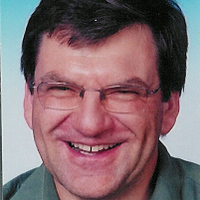
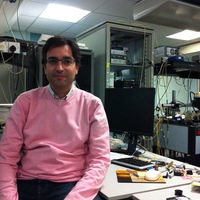
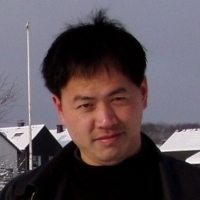
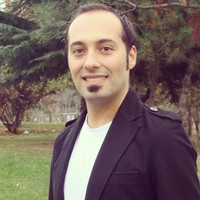


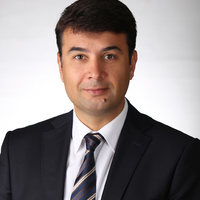



Uploads
Abstracts by K. König
tunable 80 MHz Ti:sapphire oscillator that produced 100 fs pulses (spectral width ~10 nm) and two ultrabroadband Ti:sapphire oscillators with repetition rates of 85 MHz and 1 GHz. The latter of these two and the 100 fs laser
were combined with a laser scanning microscope Tau-Map. The intensities of images of the polychromatic microsphere samples obtained with both lasers are in accordance with the usual dependence of two-photon processes on laser pulse parameters, .e. the intensity is proportional to the square of the mean laser power and the reciprocal pulse duration. In contrast to that, skin images measured with all three different excitation sources with mean powers of each laser adjusted to the particular pulse length and repetition rate exhibited discrepancies from this relation. For characterization of the ultrabroadband GHz laser, the measurements are supplemented by spectra of second-harmonic-generation signals of urea and collagen.
Background: Morphological changes in the dermal collagen and elastin fibre network are characteristic for skin ageing and for pathological skin conditions of the dermis.
Objectives: To characterize pathological and physiological conditions by multiphoton laser scanning tomography (MLT) in vivo, it is necessary to investigate and identify morphological alterations related to ageing.
Methods: In vivo MLT was used to image two-photon excited autofluorescence (AF) and second harmonics generation (SHG) in human dermis of 18 volunteers of different ages. Criteria for the evaluation of age-dependent morphological changes in MLT images were fibre tension and morphology, network pattern, clot formation and image homogeneity. These criteria were weighted and a score was calculated.
The posterior capsules of 12 porcine eyes were irradiated with a nonamplified 90 MHz near-infrared 750 nm titanium:sapphire femtosecond laser. Intratissue and superficial laser cuts of laser-ablated (5 capsules) and control (1 capsule) specimens were examined by femtosecond mul- tiphoton laser scanning microscopy (MLSM) and transmission electron microscopy (TEM).
Background: Morphological changes in the dermal collagen and elastin fibre network are characteristic for skin ageing and for pathological skin conditions of the dermis.
Objectives: To characterize pathological and physiological conditions by multiphoton laser scanning tomography (MLT) in vivo, it is necessary to investigate and identify morphological alterations related to ageing.
Methods: In vivo MLT was used to image two-photon excited autofluorescence (AF) and second harmonics generation (SHG) in human dermis of 18 volunteers of different ages. Criteria for the evaluation of age-dependent morphological changes in MLT images were fibre tension and morphology, network pattern, clot formation and image homogeneity. These criteria were weighted and a score was calculated.
tunable 80 MHz Ti:sapphire oscillator that produced 100 fs pulses (spectral width ~10 nm) and two ultrabroadband Ti:sapphire oscillators with repetition rates of 85 MHz and 1 GHz. The latter of these two and the 100 fs laser
were combined with a laser scanning microscope Tau-Map. The intensities of images of the polychromatic microsphere samples obtained with both lasers are in accordance with the usual dependence of two-photon processes on laser pulse parameters, .e. the intensity is proportional to the square of the mean laser power and the reciprocal pulse duration. In contrast to that, skin images measured with all three different excitation sources with mean powers of each laser adjusted to the particular pulse length and repetition rate exhibited discrepancies from this relation. For characterization of the ultrabroadband GHz laser, the measurements are supplemented by spectra of second-harmonic-generation signals of urea and collagen.
Background: Morphological changes in the dermal collagen and elastin fibre network are characteristic for skin ageing and for pathological skin conditions of the dermis.
Objectives: To characterize pathological and physiological conditions by multiphoton laser scanning tomography (MLT) in vivo, it is necessary to investigate and identify morphological alterations related to ageing.
Methods: In vivo MLT was used to image two-photon excited autofluorescence (AF) and second harmonics generation (SHG) in human dermis of 18 volunteers of different ages. Criteria for the evaluation of age-dependent morphological changes in MLT images were fibre tension and morphology, network pattern, clot formation and image homogeneity. These criteria were weighted and a score was calculated.
The posterior capsules of 12 porcine eyes were irradiated with a nonamplified 90 MHz near-infrared 750 nm titanium:sapphire femtosecond laser. Intratissue and superficial laser cuts of laser-ablated (5 capsules) and control (1 capsule) specimens were examined by femtosecond mul- tiphoton laser scanning microscopy (MLSM) and transmission electron microscopy (TEM).
Background: Morphological changes in the dermal collagen and elastin fibre network are characteristic for skin ageing and for pathological skin conditions of the dermis.
Objectives: To characterize pathological and physiological conditions by multiphoton laser scanning tomography (MLT) in vivo, it is necessary to investigate and identify morphological alterations related to ageing.
Methods: In vivo MLT was used to image two-photon excited autofluorescence (AF) and second harmonics generation (SHG) in human dermis of 18 volunteers of different ages. Criteria for the evaluation of age-dependent morphological changes in MLT images were fibre tension and morphology, network pattern, clot formation and image homogeneity. These criteria were weighted and a score was calculated.
Emerging Trends in Skin Science
Skin in its environment
Skin Imaging
Skin Biophysics : Methods&Models
Biophysics: Methods & Clinics
Skin Sensory Responses & Treatments
Skin, Brain & Perception
Summary: When he was just 24 years old, Johann Wilhelm Ritter discovered ultraviolet radiation. Moreover, he can be regarded as the founder of scientific electrochemistriy. Becoming increasingly in the crossfire of critical opinions, Ritter lost his reputation as a genius of physics in the last years of his life. Only many years after his untimely death Ritter' discoveries were fully acknowledged.
Keywords: Johann Wilhelm Ritter, Ultraviolet radiation